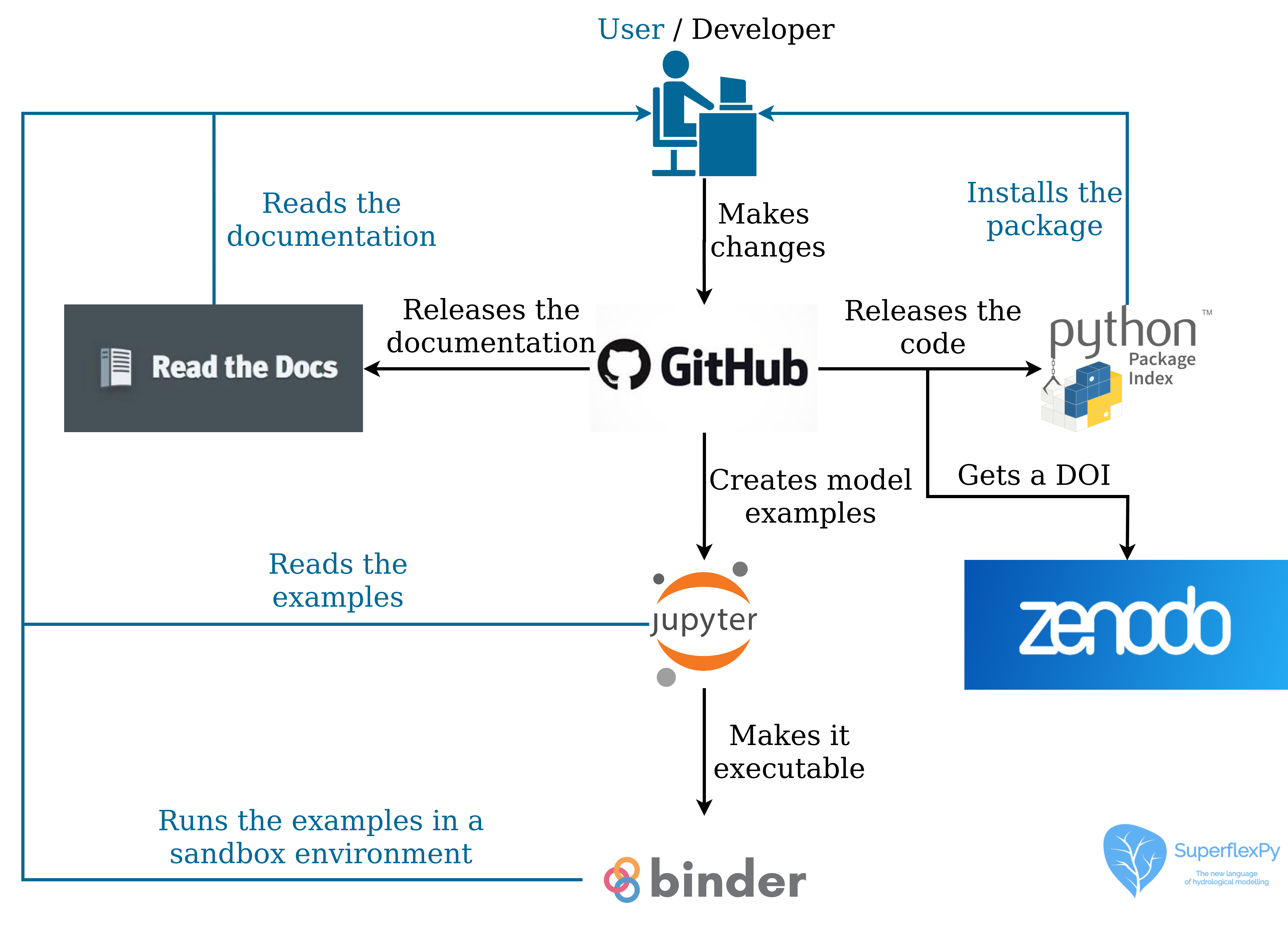Note
Last update 22/07/2021
Software organization and contribution

The SuperflexPy framework comprises the following components:
Source code: Latest version of all the code necessary to use the framework. The source code would normally be accessed only by advanced users, e.g. to understand the internal organization of the framework, to install manually the latest version, to extend the framework with new functionality, etc.
Packaged release: Latest stable version of the framework available for users.
Documentation: Detailed explanation of the framework.
Examples: Introduction to SuperflexPy for a new user, providing working models and demonstrating potential applications.
Scientific references: Publications that present and/or use the framework in scientific contexts.
The source code, documentation, and examples are part of the official repository of SuperflexPy hosted on GitHub. A user who wishes to read the source code and/or modify any aspect of SuperflexPy (source code, documentation, and examples) can do it using GitHub.
New releases of the software are available from the official Python Package Index (PyPI), where SuperflexPy has a dedicated page.
The documentation builds automatically from the source folder on GitHub and is published online in Read the Docs.
Examples are available on GitHub as Jupyter notebooks. These examples can be visualized statically or run in a sandbox environment (Binder). Refer to Examples for a list of the available examples.
The scientific publication introducing SuperflexPy has been published in Geoscientific Model Development (link).
Contributions
Contributions to the framework can be made in the following ways:
Submit issues on bugs, desired features, etc;
Solve open issues;
Extend the documentation with new demos and examples;
Extend and/or modify the framework;
Use and cite the framework in your publications.
Code contribution by external users will be mainly additive (i.e., adding new components, as illustrated in Expand SuperflexPy: Build customized elements and Expand SuperflexPy: Build customized components) and should include also appropriate testing (Automated testing).
Contributors will maintain authorship of the contributed code and are invited to include, in all files, their contact information to facilitate future collaboration. The authors and maintainers of SuperflexPy will undertake a basic inspection of the contributed code to identify any quality issues.
The typical workflow that should be followed when contributing to a GitHub project is described here.
In summary, the following steps should be followed:
Fork the SuperflexPy repository to the user GitHub account;
Clone the fork on the user computer;
Modify the code, commit the changes, and push them to the GitHub fork of SuperflexPy;
Make a pull request on GitHub to the SuperflexPy repository.
Branching scheme of the GitHub repository
Updates to SuperflexPy are made directly in the branch master, which
is the most up-to-date branch. The branch release is used only
for the staging of new software releases and, therefore, code should not be
pushed directly to it.
When a code update is merged from master to release, a
new version of the package is automatically released on PyPI. Remember to update
the version number in the setup.py file to avoid conflicts.
Developers are free to create new branches, but pull requests must be directed to
master and not to release.
Documentation and examples are generated from the master
branch.